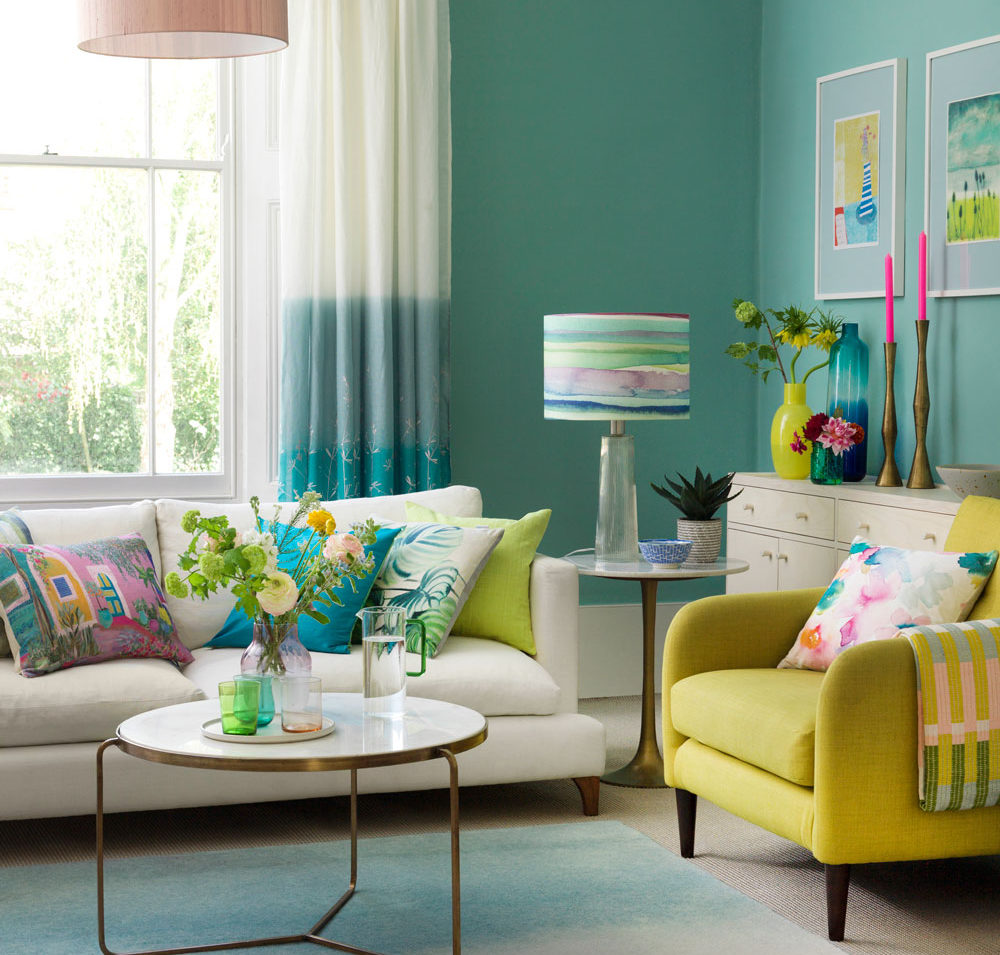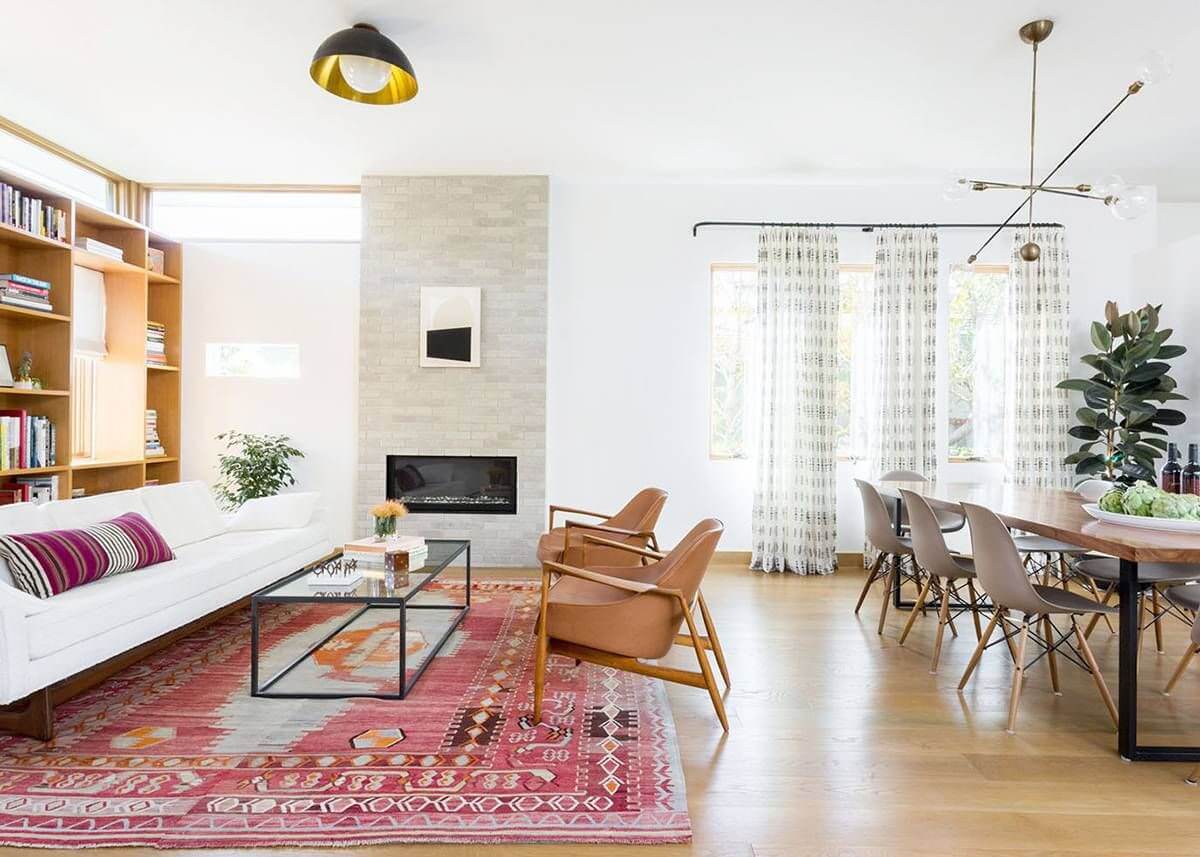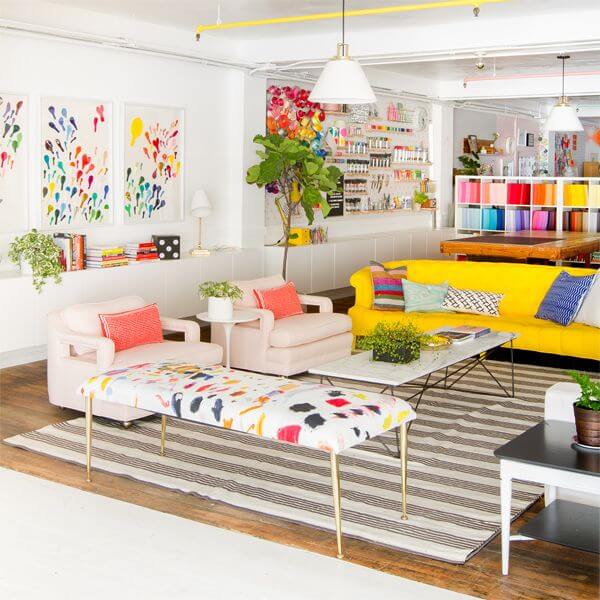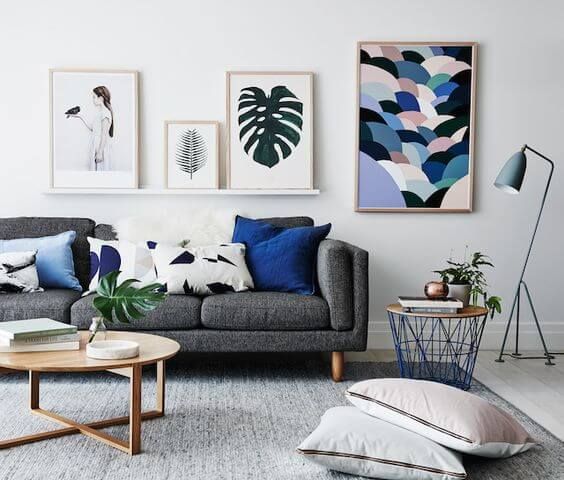Often underestimated, the brightness of a room is of paramount importance to create a welcoming and pleasant space. This is particularly important when you are setting up a small living room or a living room whose exposure or other architectural feature creates a barrier to natural light. In this case, many of us resort to small decorating tips in the hope of enlarging, at least visually, the space. Mirrors, transparent materials, multiplication of light sources, space-saving furniture, there are fortunately several solutions to the problem in question. In the lines that follow, however, we will try to answer the question which color of paint for a bright living room, paint being undoubtedly the most effective way to invite the sun into our interiors.
1. Choose a paint color according to the temperature
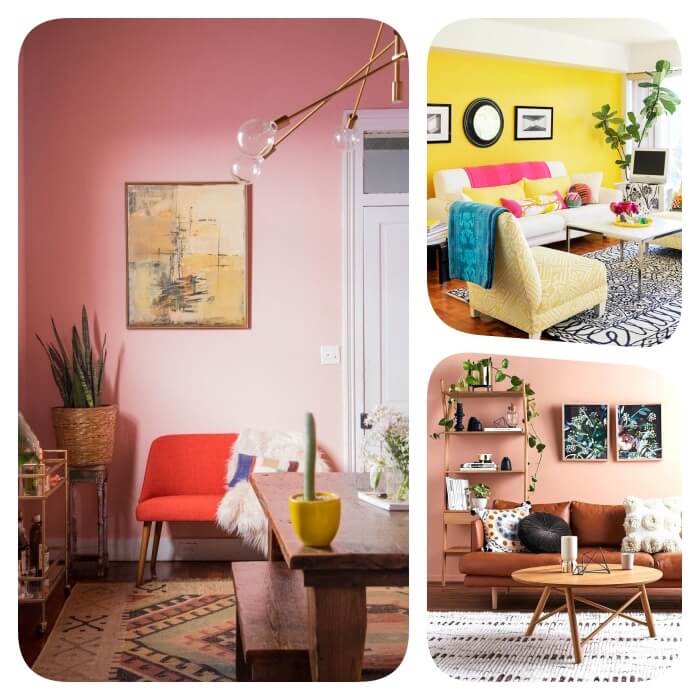
When choosing a paint for our living room, we usually start from the color and more concretely from the shade of this one. First big difficulty to face – the shades currently existing on the market of mural painting are innumerable and very varied. However, if we take the warmth of color as a criterion, we can generally distinguish two global varieties within the chromatic circle. On the one hand, there are the cold colors (blue, green, purple) which leave an impression of coldness but also of a certain freshness and peace. And on the other hand, the so-called warm colors (yellow, red, orange, pink), charged with energy and luminosity. The sun and the light being naturally associated with the latter, we consider the warm shades more suitable for dark rooms.
2. Choose a color according to its ability to reflect light
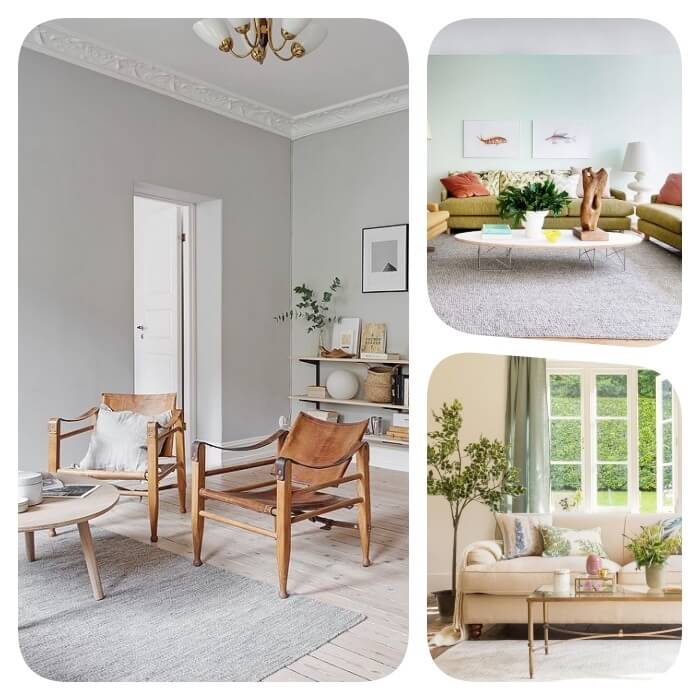
However, since color temperature is a rather abstract notion, even cold colors could sometimes take on a warm character. The reason lies behind the notion of the capacity to reflect light. That is, the lighter a color, the more it possesses this magical ability to create a play of reflections, making a room appear more airy than it is. On the other hand, dark colors absorb light, thus having the property of narrowing the space. Adopted in total look, these could even result in a feeling of oppression. So avoid shades that are too dark, unless you don’t like to emphasize the intimate character of the room.
3. Choose a paint color according to the orientation of the room
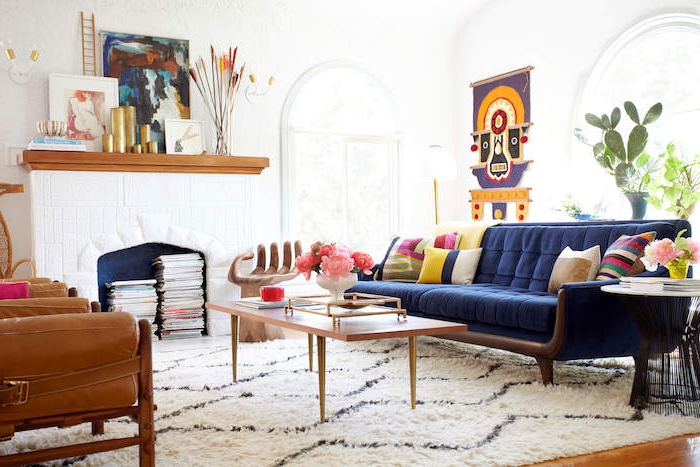
We tend to overlook the room exposure – paint color ratio and yet it is so important! You know without a doubt that rooms with southern exposure receive the most natural light. On the other hand, in those exposed to the North, the lack of light was felt in a very intense way. So in this case, we will obviously bet on a color that is both light and warm. White, having the best reflectivity of all existing colors, would also be a top choice. The same would make sense if you have a room facing east. In the West and the South on the other hand, you could dare a cold shade without it being too dark for all that.
4. Give importance to the finish
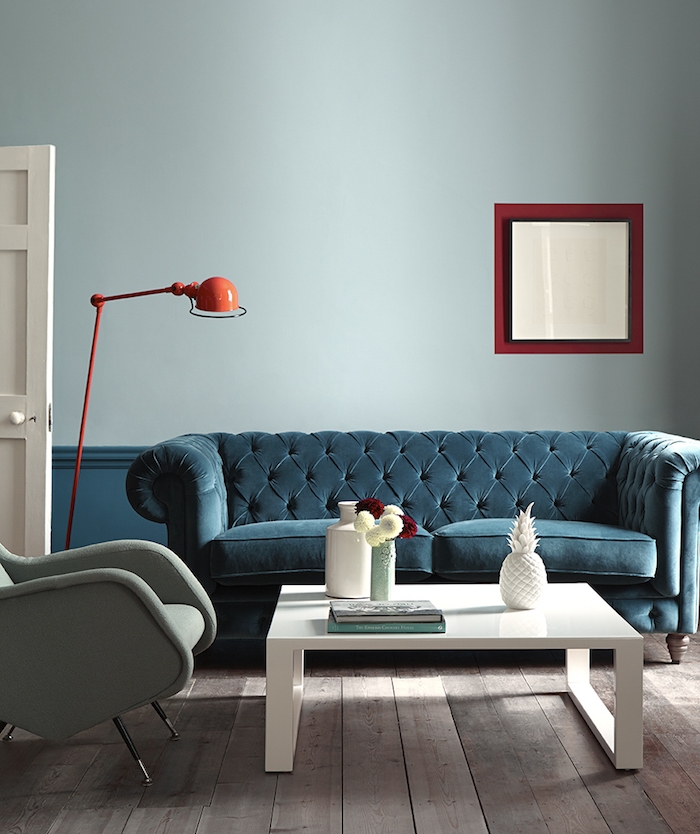
Another aspect that one tends to underestimate – the finish also plays a major role in the reflective ability of wall surfaces. Similar to colors, the matte finish is not recommended due to its absorbency; instead, you will need a satin or gloss finish as these are recognized reflectors. So, concerning the finish, you only have 3 main solutions, at least at this level your choice is not that complicated.
5. White in all its variations
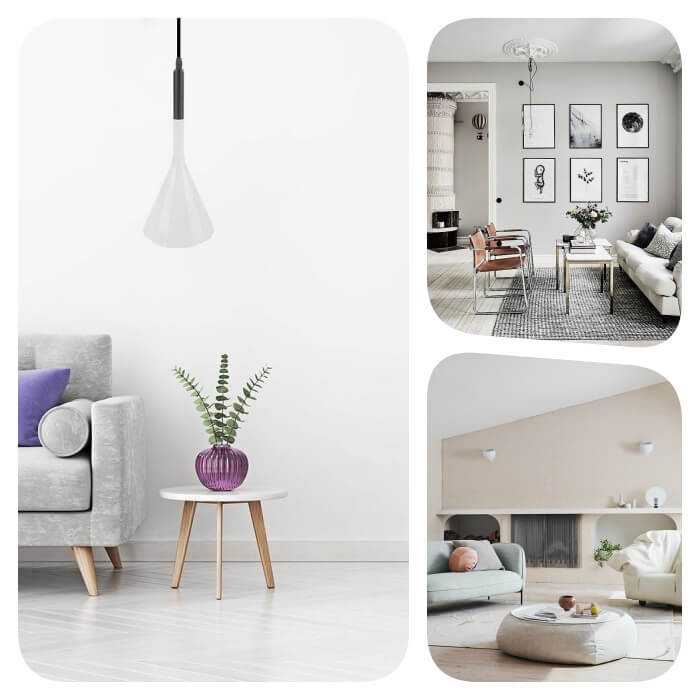
As we suggested above, white is arguably the most popular choice for drawing more light into the living room. Timeless and universal, it has always been a sure value in painting. Note, however, that your options go far beyond pristine white. White can usually be mixed with many other colors, so as to obtain one of those shades that we have come to call off-whites. But do not panic, whether it is ecru, linen , ivory, creamy or even tending towards green or another color, white will never fail to do its job.
6. Neutral colors
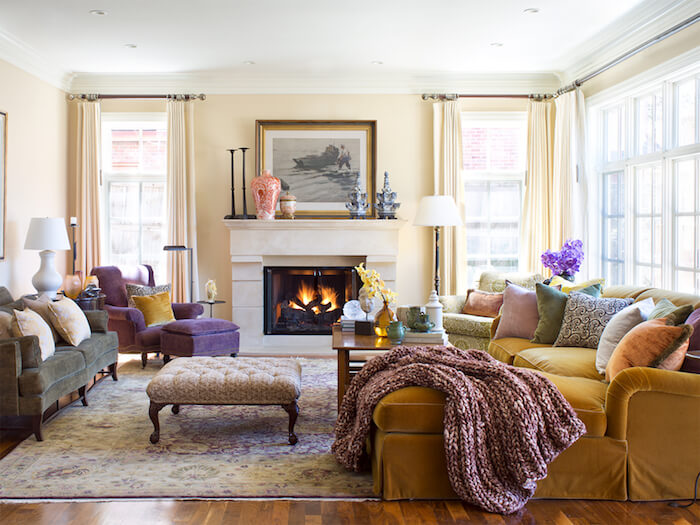
The same goes for neutrals which are another nice option in cases where they are available in their light tones. Light gray in the first place is arguably our favorite shade. A perfect choice for Nordic style and cocooning atmospheres as we like them today. But also the range of browns, beiges and all earthy tones create the perfect background, allowing you to unleash your color creativity as you imagine and plan the rest of the decor.
7. Pastels and warm colors
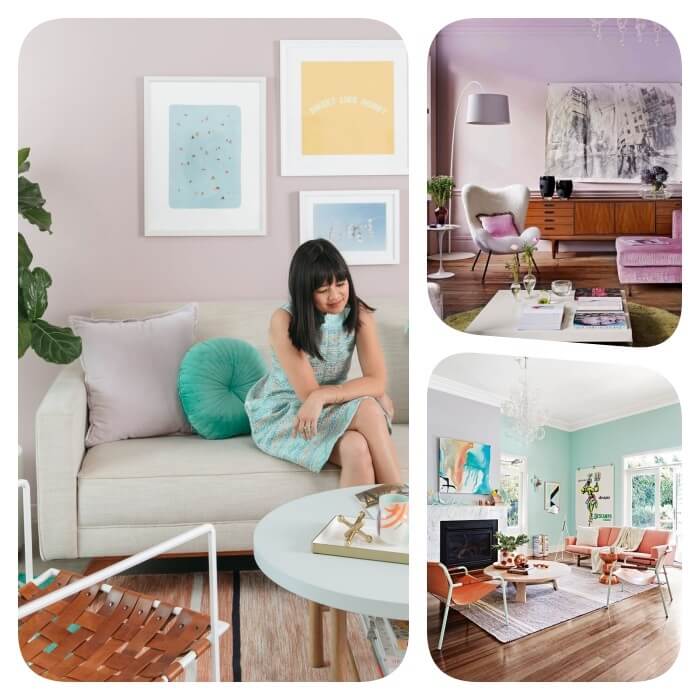
But can a real color find its place in a living room that lacks light. Rest assured ! There are plenty of shades that are able to expand the space, including pastel shades in the first place. Everything would depend on the atmosphere you would like to create. Pastel pink, for example, would be an excellent choice for a feminine, romantic and gentle interior. A blue or a light pastel green that the imagination tends to associate with the sky and the vegetation on the other hand, will correspond perfectly to a Zen or countryside atmosphere. Otherwise, a warm color will also do. So, do not hesitate to opt for fresh solutions in the range of yellows and oranges (even the most vivid among them) which carry the light in them. Sky blue, light purple or other soft shade of mauve, a mint or sea green shade will also bathe your room in daylight.
8. Glossy paints and matte paints
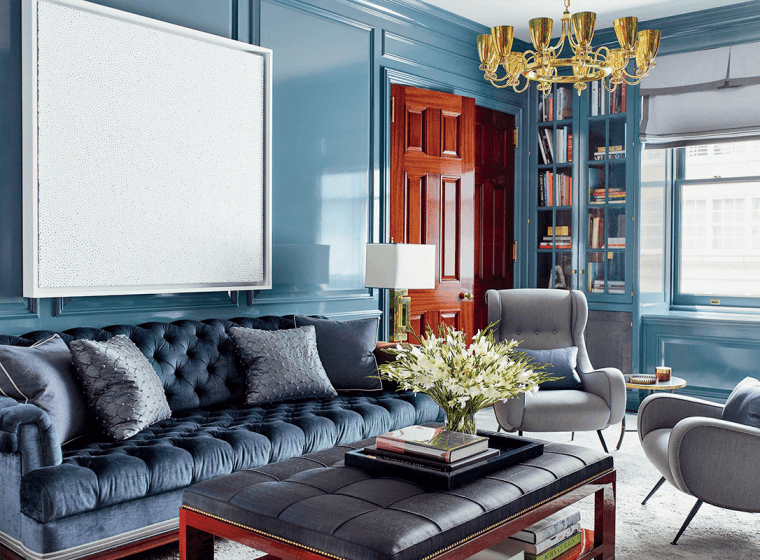
Glossy or satin finishes reflect light while matte finish paints absorb it.
9. Light colors, but warm
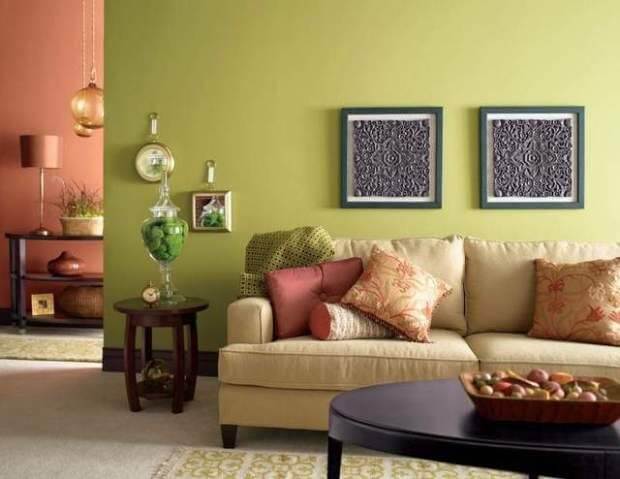
They are particularly in their place in the rooms which receive little light or the spaces located in the North, where the light is cold. They give the room a reassuring and soothing atmosphere thanks to the soft luminosity that emanates from it.
10. Light colors, but cold
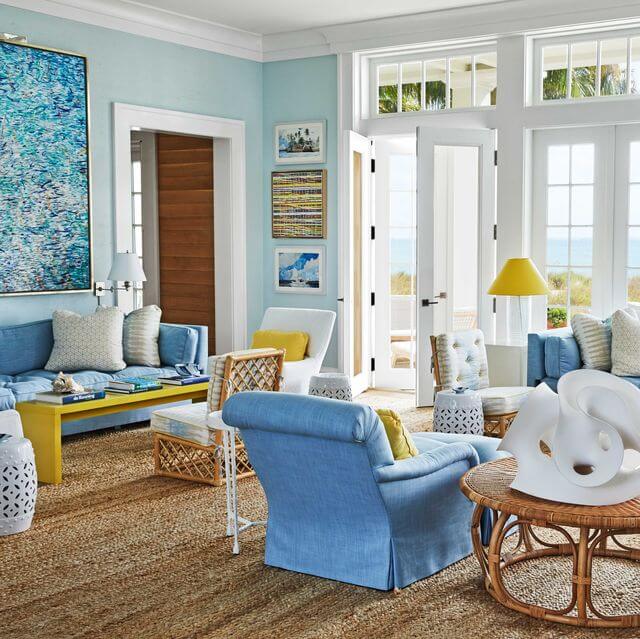
They bring a lot of freshness to a room which is located to the West or due South. The paler shades of blue and gray are perfect for achieving this look.
Some examples
11. White and its shades
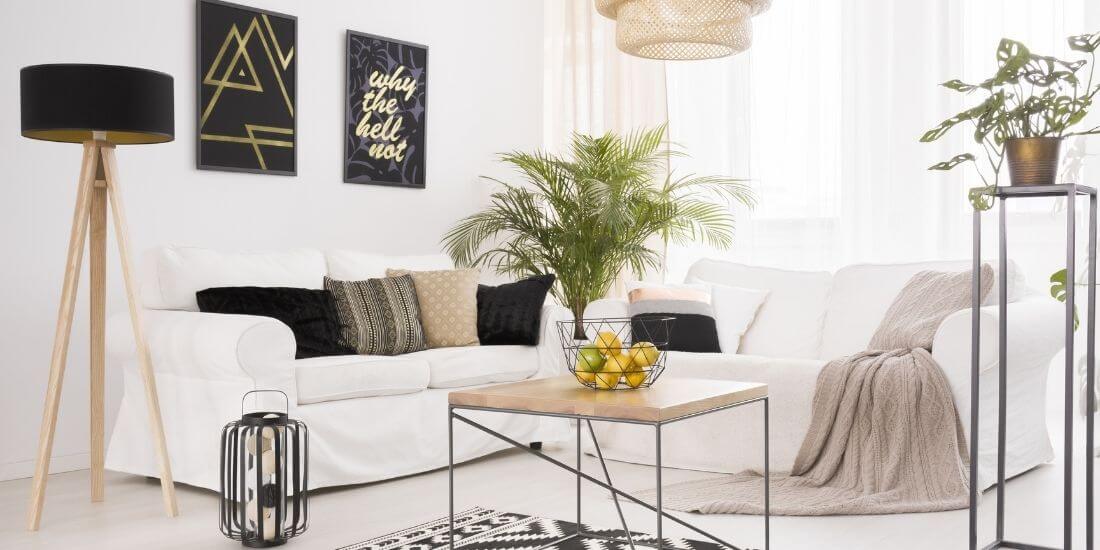
White remains the most recommended color to create brightness in the living room. It is indeed the shade that best reflects the light in a room, provided you choose the right finish. For furniture, shades of white are ideal for creating a warm living room.
In decoration, you can use beige or white cushions and throws or bring a little contrast by choosing colored elements, in the shade of your choice. Black and gold, for example, create a classy but warm atmosphere. Duck blue is also particularly trendy, as are coral pink and burgundy red.
12. Grey
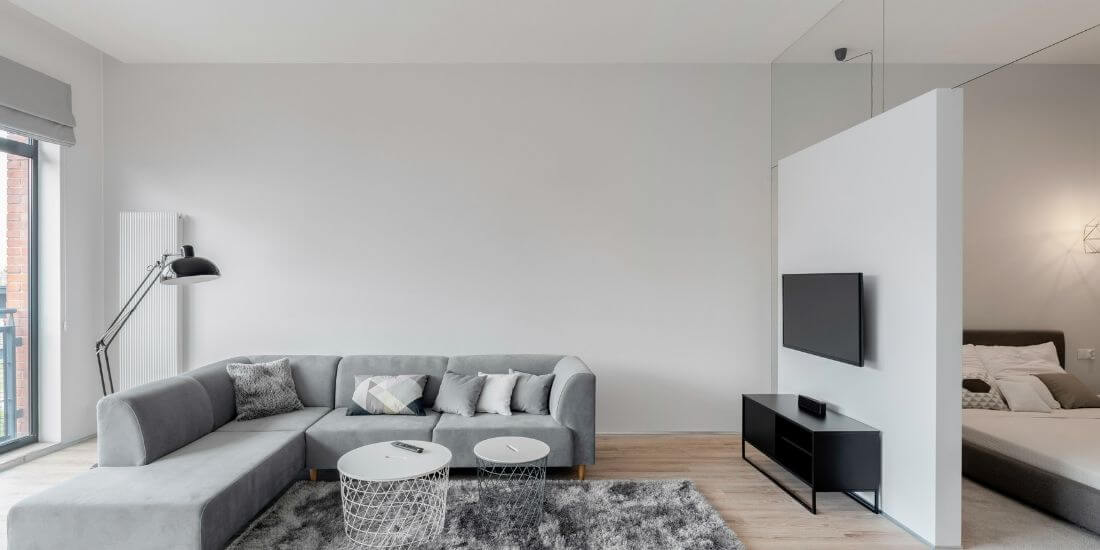
It is quite possible to use gray to bring more light into the living room, but it is important to choose the right shade. The shades of light gray are quite suitable to allow a little originality while bringing clarity. To give the room some height, you can paint 3/4 of the wall gray and keep a white part on top. If you want furniture a little darker, it is better to stay in shades of gray.
But you can also create particular atmospheres by using specific colors with gray . Mixing gray and pastel pink or old pink creates a romantic atmosphere. For a more natural atmosphere, you can use verdigris and rattan furniture.
13. Blue
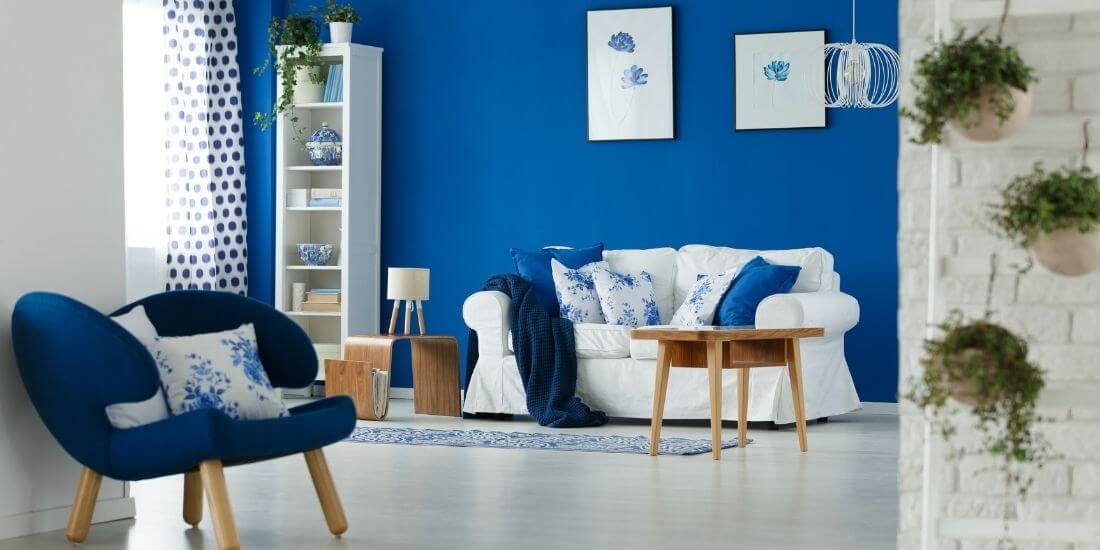
You can use a cool color like blue to give a room more light. It is also one of the only cold colors where it is possible to use an electric shade to bring brightness. You can for example opt for a royal blue or an electric blue for a particular atmosphere. Be careful, however, it is better to limit yourself to painting a single wall if you make this choice, otherwise the room will be crushed. You can also play with materials and nuances for more originality.
Pastel blue and sky blue are also quite suitable for a more relaxed atmosphere and which does not darken a room. Be careful, however, it is better to avoid this option if your room is really dark.
14. The green
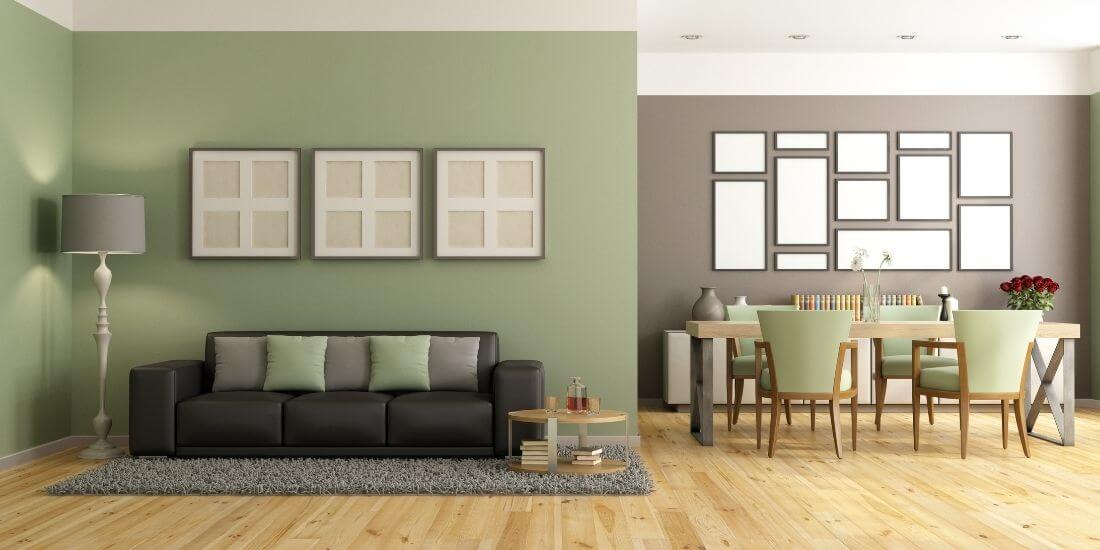
It is better to use green sparingly if you want to create a bright living room and garish colors are prohibited, otherwise you will have a room that is too overwhelmed. If you want to use green paint but your living room is dark, go for natural colors. Sage green, sea green, verdigris or almond green are very good choices for painting the walls of a living room. Again, it is better to stick to one or two walls rather than the entire room.
To match furniture and decoration, it is advisable to use natural materials such as rattan. For the floor, oak or natural wood floors are the most suitable. You can also opt for whitewashed wooden floors, but you should definitely avoid floors that are too dark. Green and exotic wood floors are more recommended in the bathroom.
15. Purple
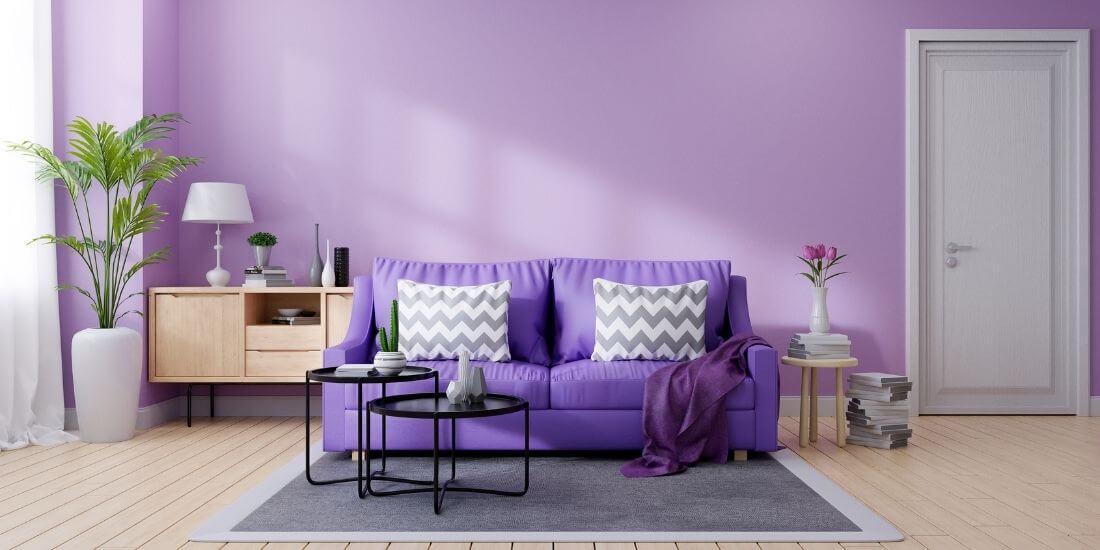
Purple is a very specific color that is difficult to integrate into the decoration of a room. However, if you absolutely want to use a purple paint in your living room, you can. The best solution is to use a rather light but visible shade, while creating a contrast with the sofa. Purple is quite difficult to match, so choose a darker purple sofa.
For floors and furniture, avoid using dark colors. A whitewashed or natural wood floor is ideal. As for the furniture, use shades of warm wood with a slight yellow tinge. You will be able to create a warm interior with a cool color.
16. The pink
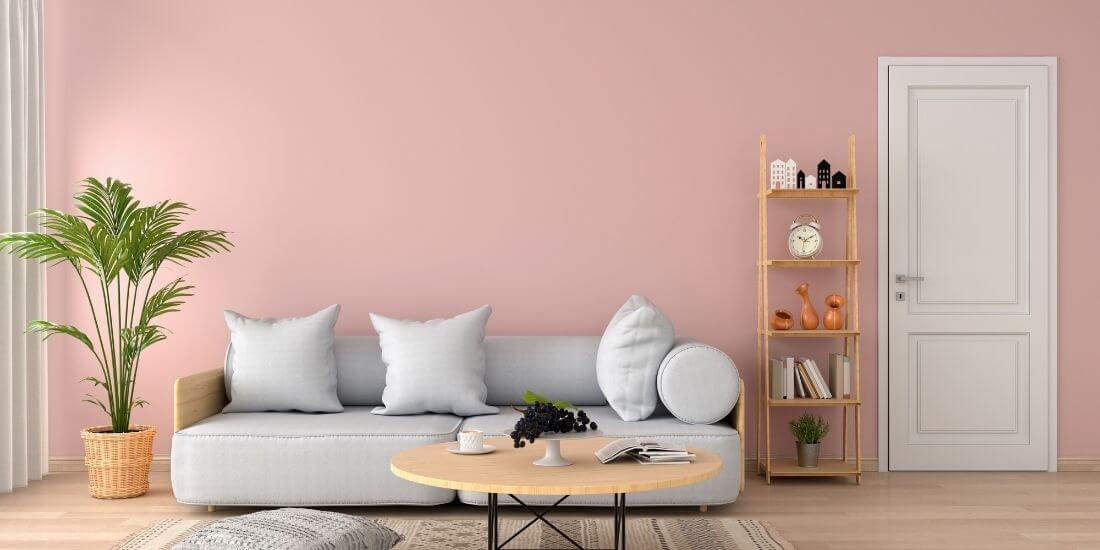
Pink is one of the most suitable colors to bring brightness to the living room, provided you choose the right shade. Indeed, as with all colors, there are shades of cold pink and shades of hot pink. For a warm and bright living room, it is better to turn to the colors of hot pink. This is for example the case of coral pink, which tends towards orange. If you prefer more subdued colors, old rose is also considered a hot pink.
Avoid cold roses like raspberry pink as much as possible, unless you want to use it on one wall. For furniture, pink can match many colors. An old rose can handle almost anything. For coral pink, it is better to choose warm wood furniture that tends towards yellow.
17. Orange
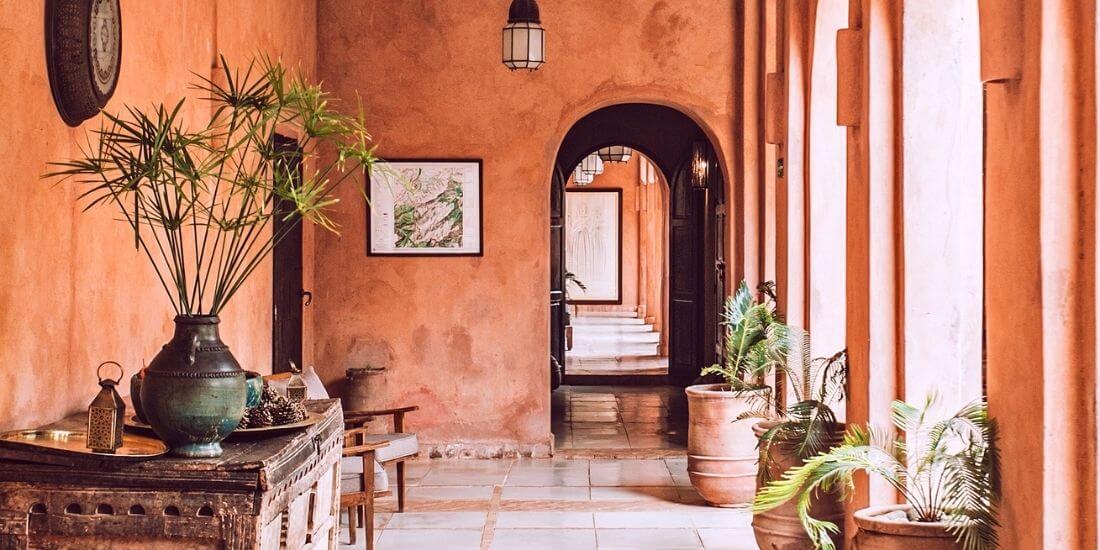
For a bright and warm living room, orange is ideal. Be careful, however, you should not use just any color and it is important to know how to match it. We immediately avoid the electric orange and very conspicuous and we prefer to turn to more natural colors. As such, it is terracotta that breaks all popularity records. This color is suitable for certain living rooms such as the living room. You can use a satin paint or play with the textures directly on the wall. Obtaining this result can however be complicated, calling a professional is advised.
Orange and terracotta go very well with shades of white … as long as you don’t use pure white. Prefer beige tones and choose natural wood furniture such as rattan.
18. Yellow
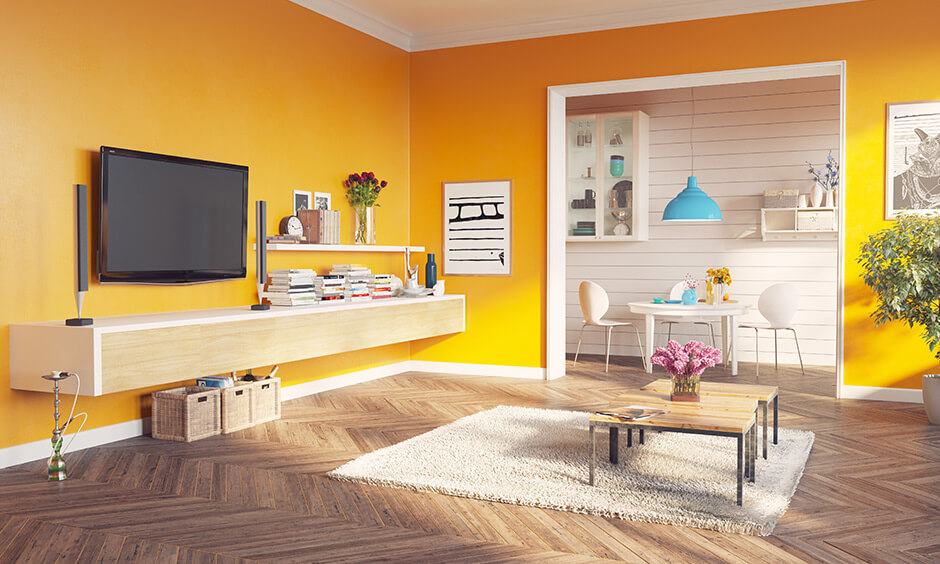
You can use shades of yellow to bring more warmth to the main room, but be careful, you have to be particularly attentive to the colors. Yellow should be bright without being too conspicuous. All the nuances which draw towards the fluorescent yellow are therefore to be avoided. Sun yellow can be used, as long as it is on one wall. The play of textures can also be interesting for painting a living room in yellow.
For furniture and decoration, it is better to stay rather sober. Furniture in white is the most suitable. For fabrics, yellow goes quite well with blue, as long as you choose the right color. Do not hesitate to provide you with color charts before making your final choice.
19. Sage
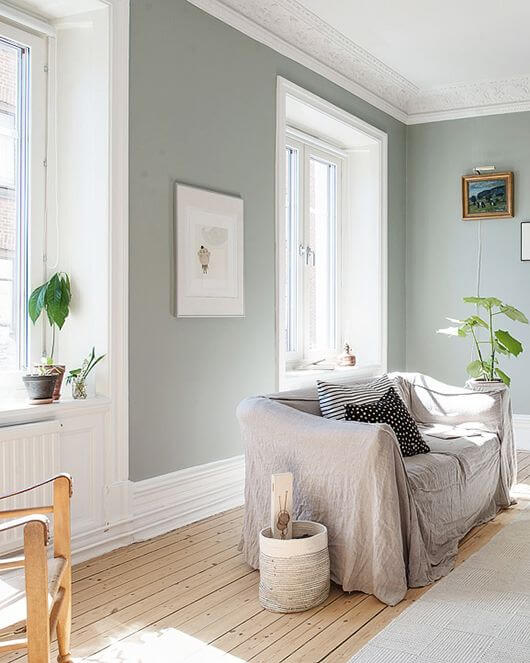
A color like this is organic and refreshing; perfect for bringing the room to life and adding a touch of sparkle to your walls! It goes well with shades of powder blue, dark yellow or white.
20. Periwinkle
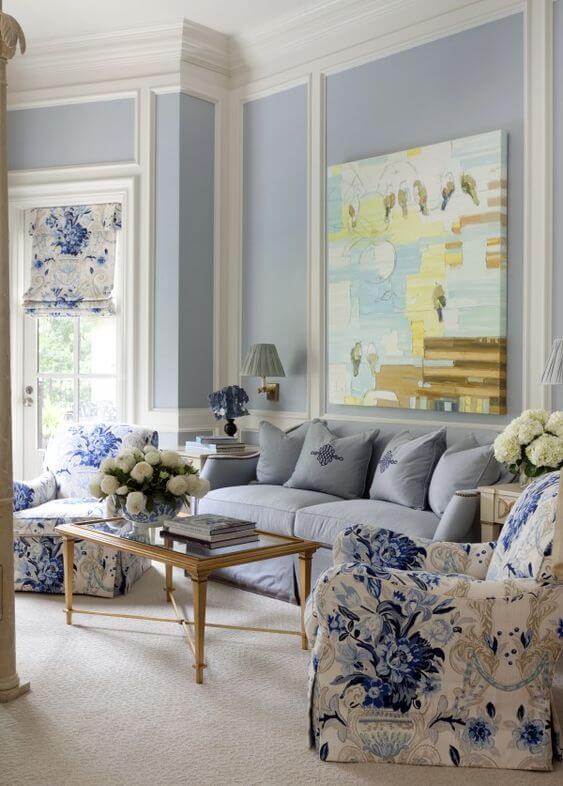
Periwinkle is a color mixing mauve and blue. Very vibrant at the base, this shade will definitely make an impact in the room. For lovers of contrast, you will not be disappointed.
21. Mauve or cashmere gray
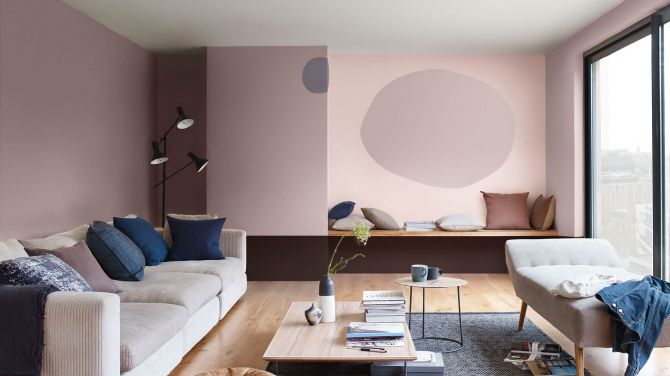
These shades of mauve and gray are neutral and softer versions of their original color. Akin to taupe, these choices are perfect for a calm and serene atmosphere. You can pair them with neutral tones to create an illusion of depth to the room.
22. Dark yellow
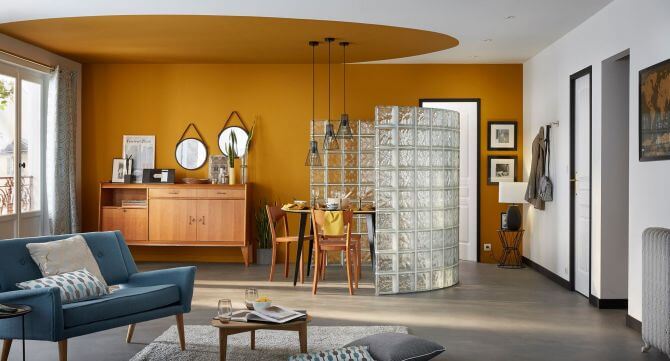
When we think of yellow, it is rare that we associate this shade with the color of our walls. However, dark yellow, like mustard, brings an original and bold accent to the room. In several examples, this color is used to define different shapes on the walls, such as circles or squares.
23. Hazelnut
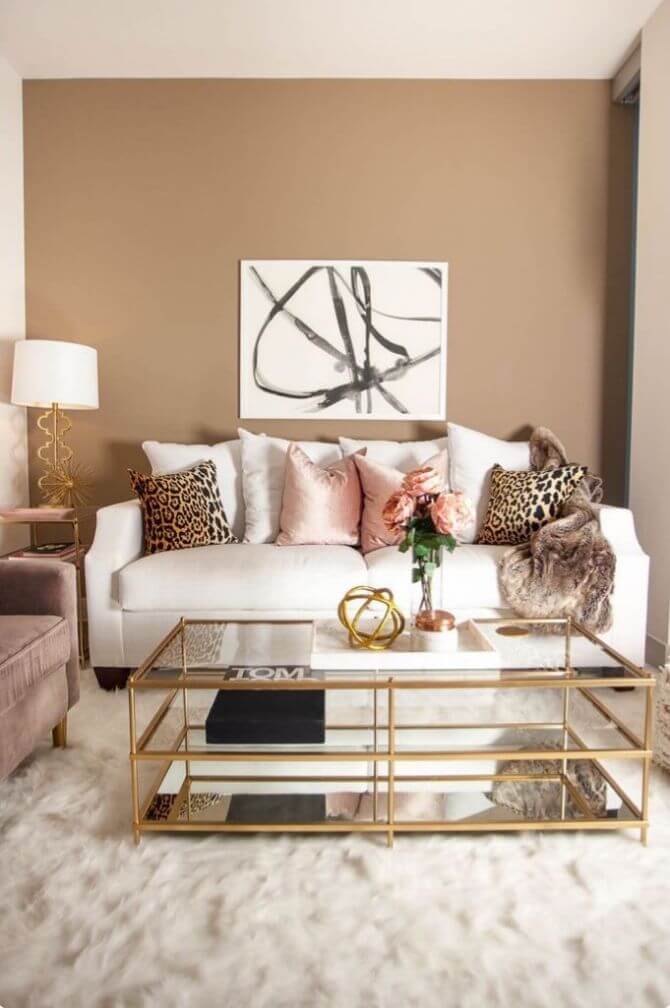
For lovers of fall colors, hazelnut brown is a classic color that ages well. Welcoming, it will be perfect for evenings with friends with good hot drinks.
24. Sand / oats
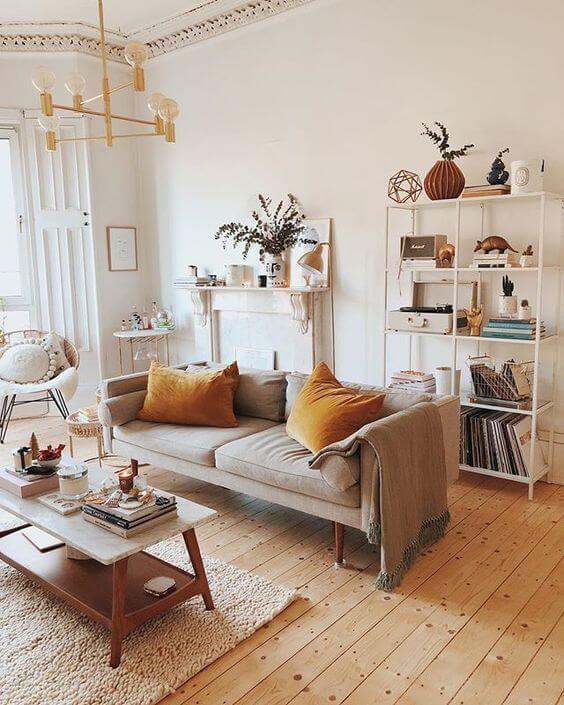
Just like hazelnut, sand or oat color are colors that age wonderfully. Increasingly in vogue, shades of beige harmonize perfectly with modern and vintage accessories.
25. Royal blue
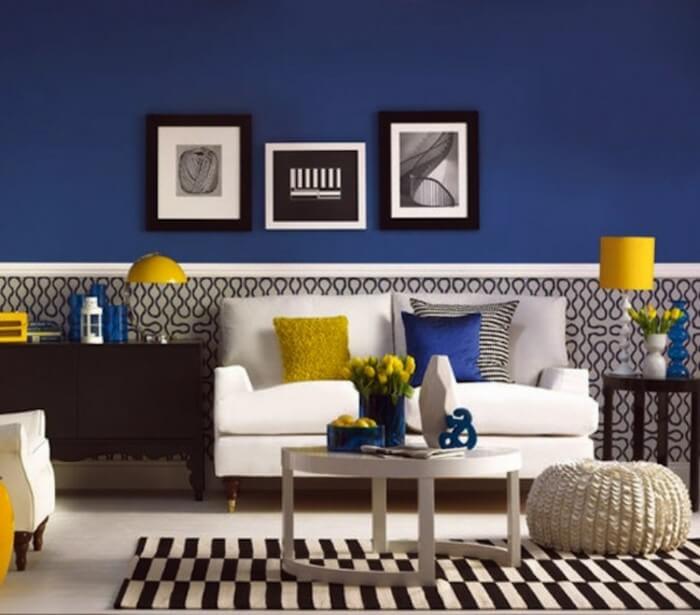
For a dynamic and bright living room, we bet on a pretty royal blue. A single section of painted wall is enough to brighten up the room. © Zolpan
26. Honey
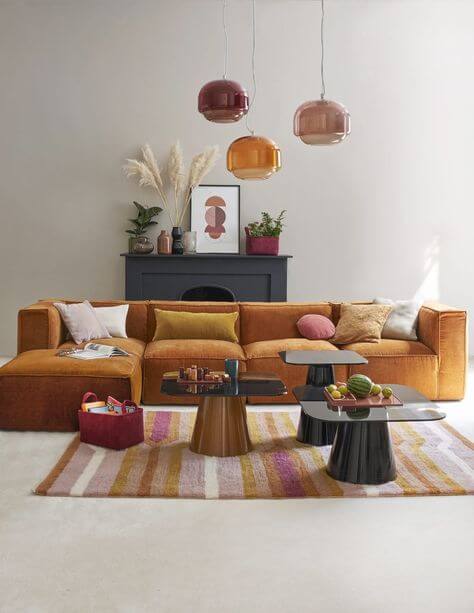
To spice up the living room without weighing it down too much, we put on touches of golden brown and honey that brighten up the room in the blink of an eye. © La Redoute Interiors
27. Powder pink
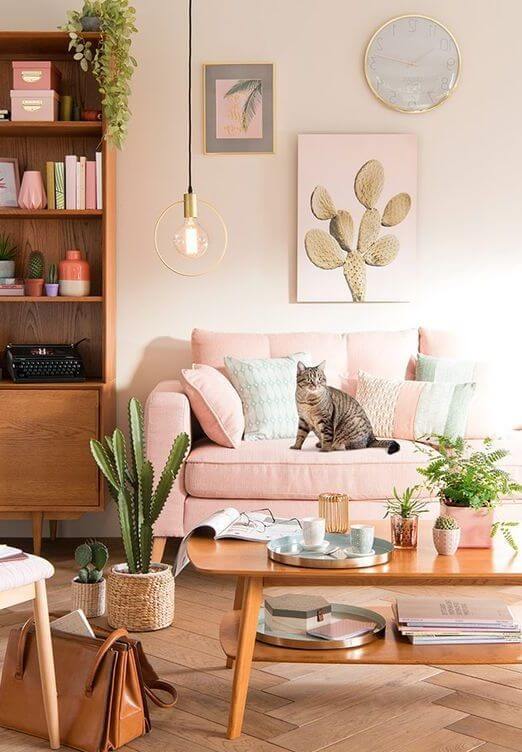
For a living room with a soft but bright atmosphere, there’s nothing like a powder pink on the walls and home textiles. © Maisons du Monde
28. Polar green
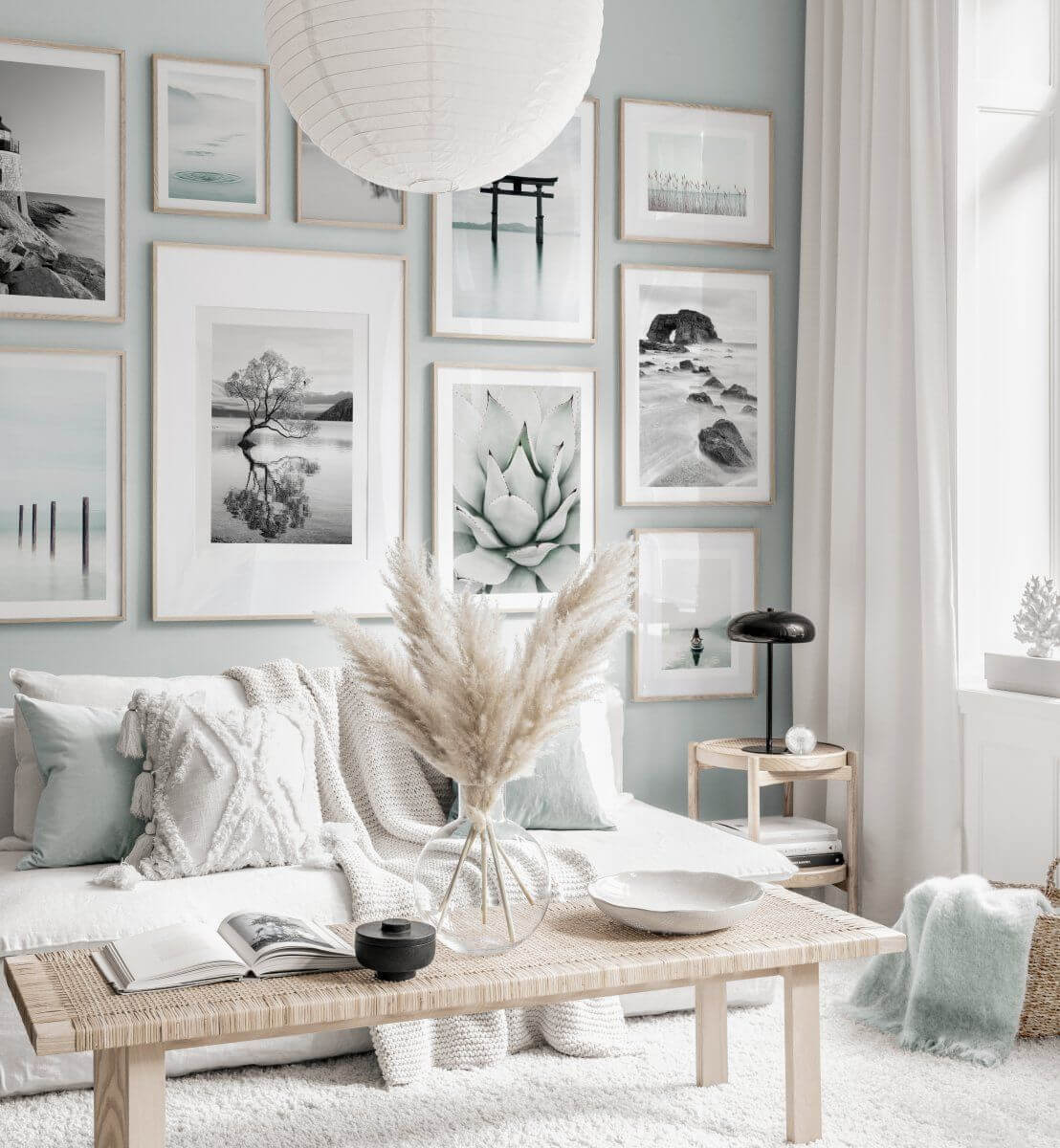
For a cocooning, cozy and bright interior, nothing like the combination of light wood, white and subtle touches of green reminiscent of the cold colors of Scandinavia. © Poster Store
29. Orange tones
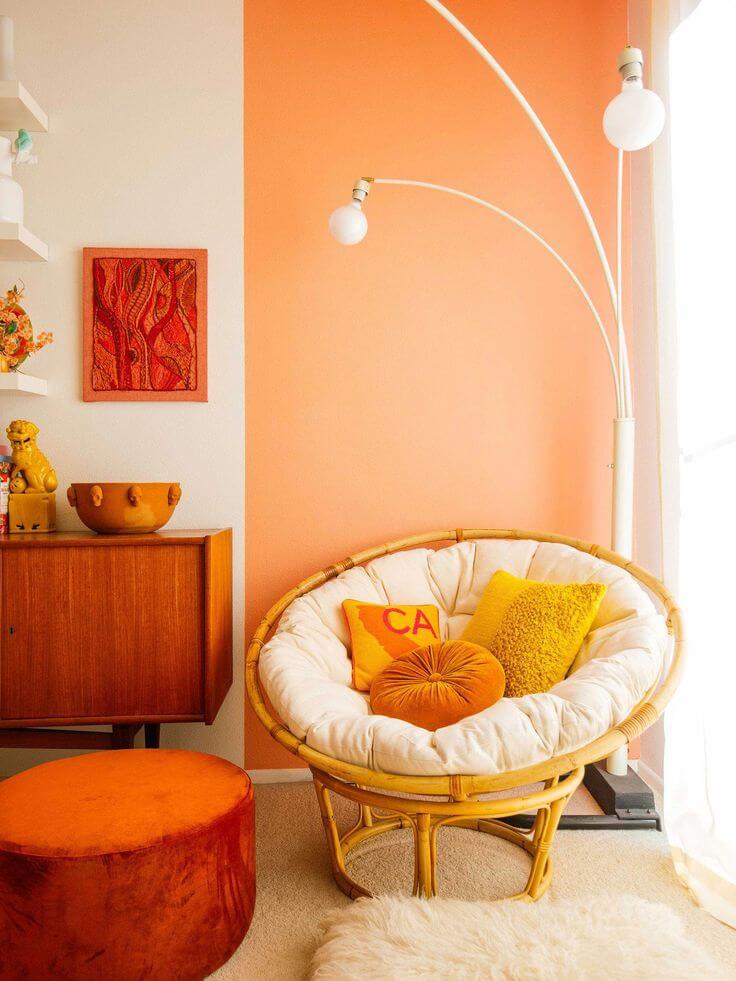
Orange tones are back in fashion. They warm up the interiors and give an oriental and sunny touch to the rooms. Enough to illuminate and sublimate the living room! © Pinterest
30. Beige
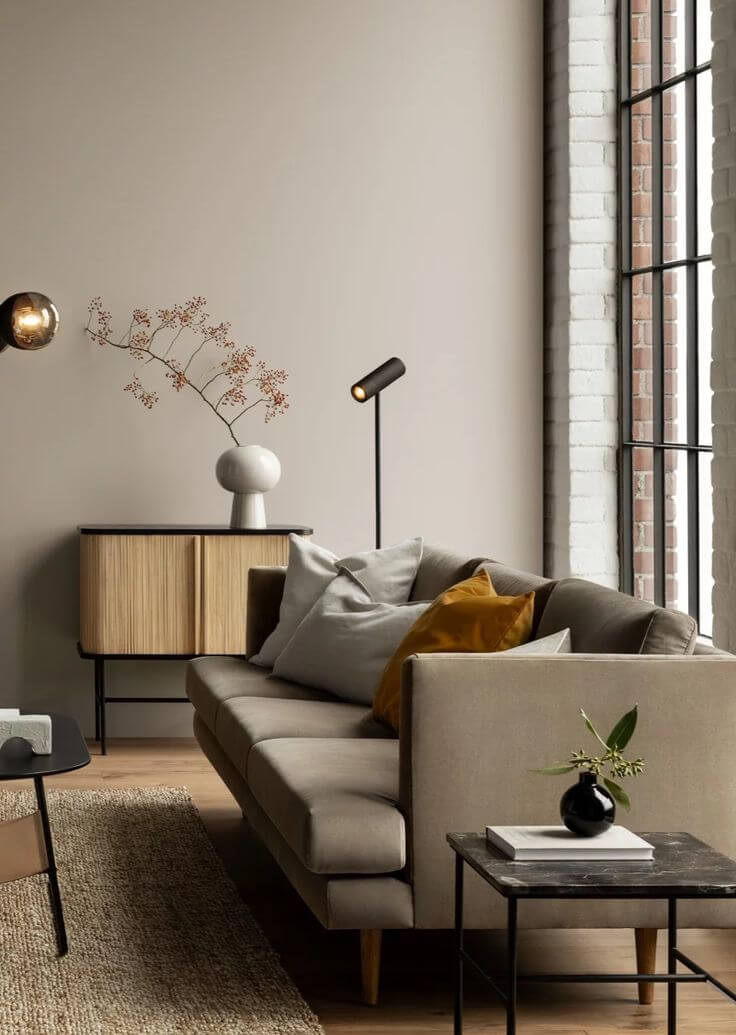
Beige, more or less light, is one of the trendy colors of the year 2021. It gently awakens our interiors and makes rooms more warm and bright. © Pinterest
31. Terracotta
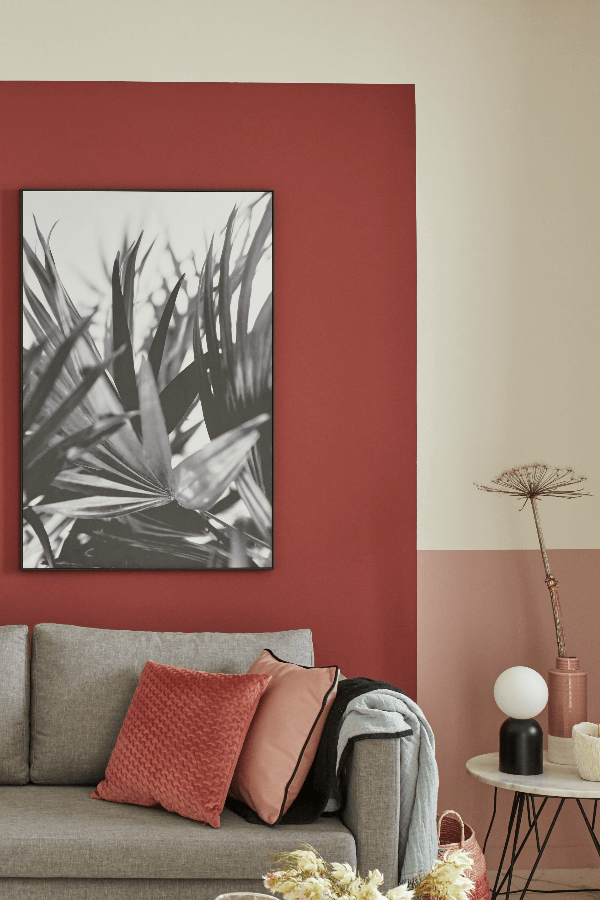
Terracotta invites you to travel and gives pride of place to earthy colors. It warms the living room with subtlety and illuminates the room with a thousand lights. © Leroy Merlin
32. Sky blue
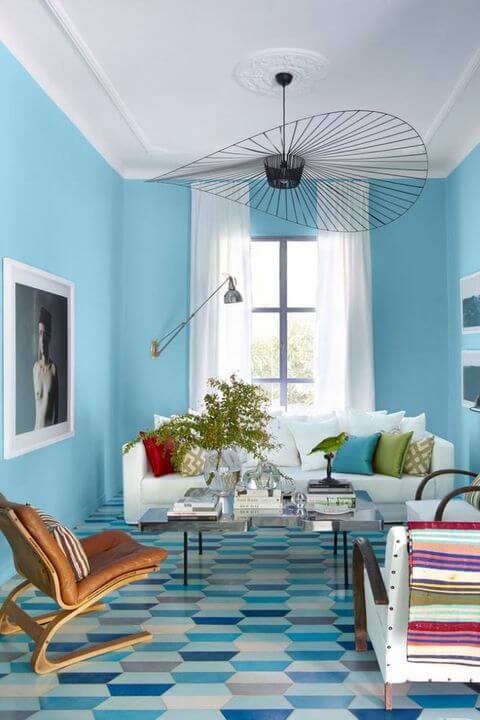
The sky blue also invites itself in the living room to make us travel in the air very smoothly. In addition it makes the room comforting and bright.
33. Soft green
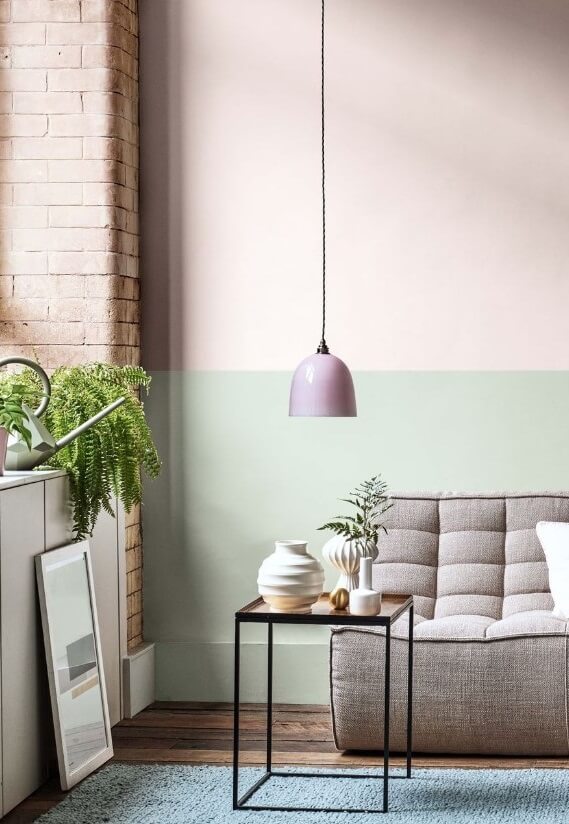
This soft green brings a lot of light, but also softness to this soothing and restful living room.
34. Nuanced white
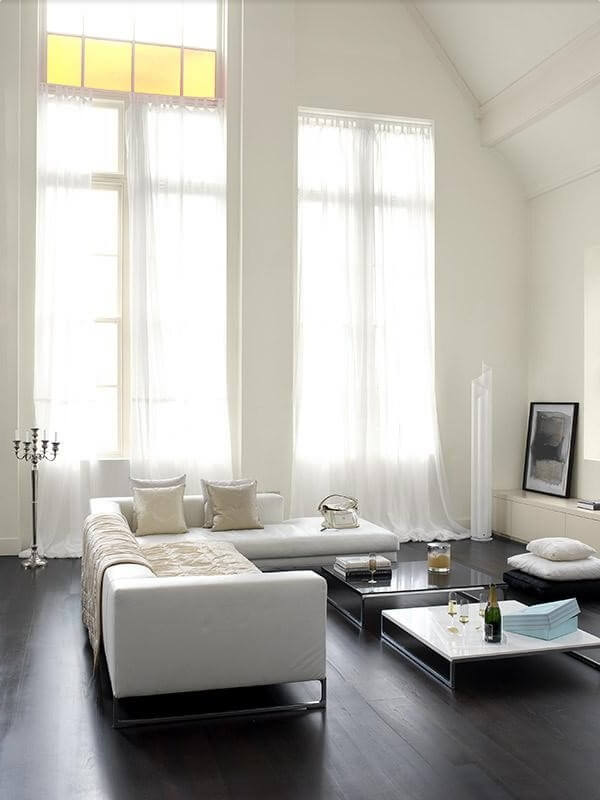
This nuanced white brings a lot of light, but also relief and personality to this living room. The white sofas form a beautiful alliance with the walls while the table and the floor give contrast to the room.
35. Off-white
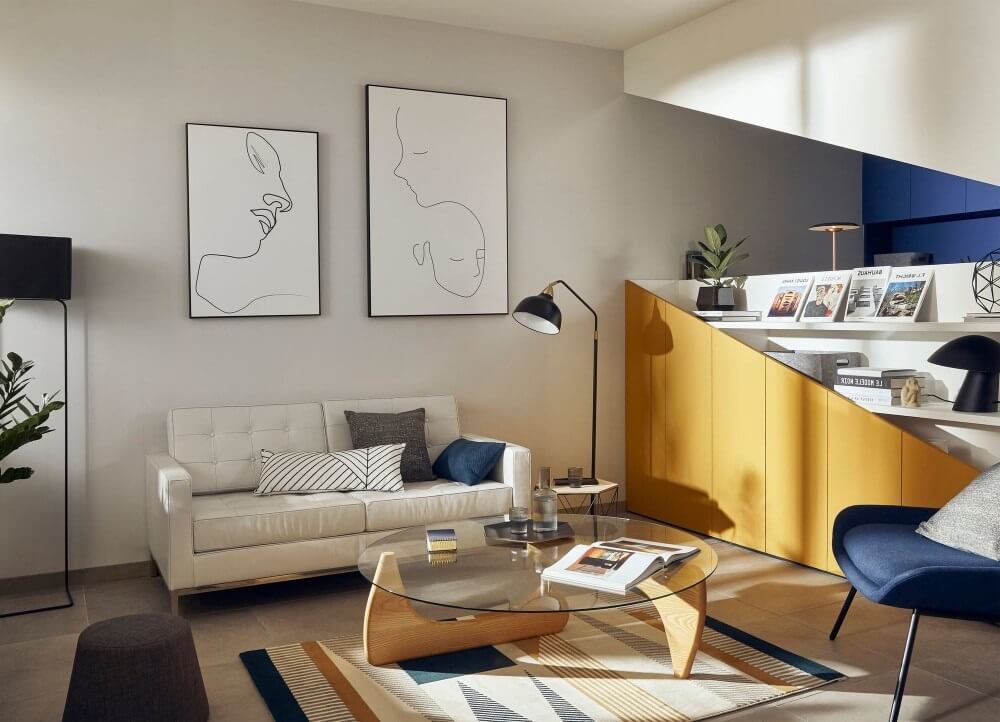
The off-white walls bring in light despite everything, this feeling is further enhanced by the presence of warm yellow and deep blue.
36. Pale blue
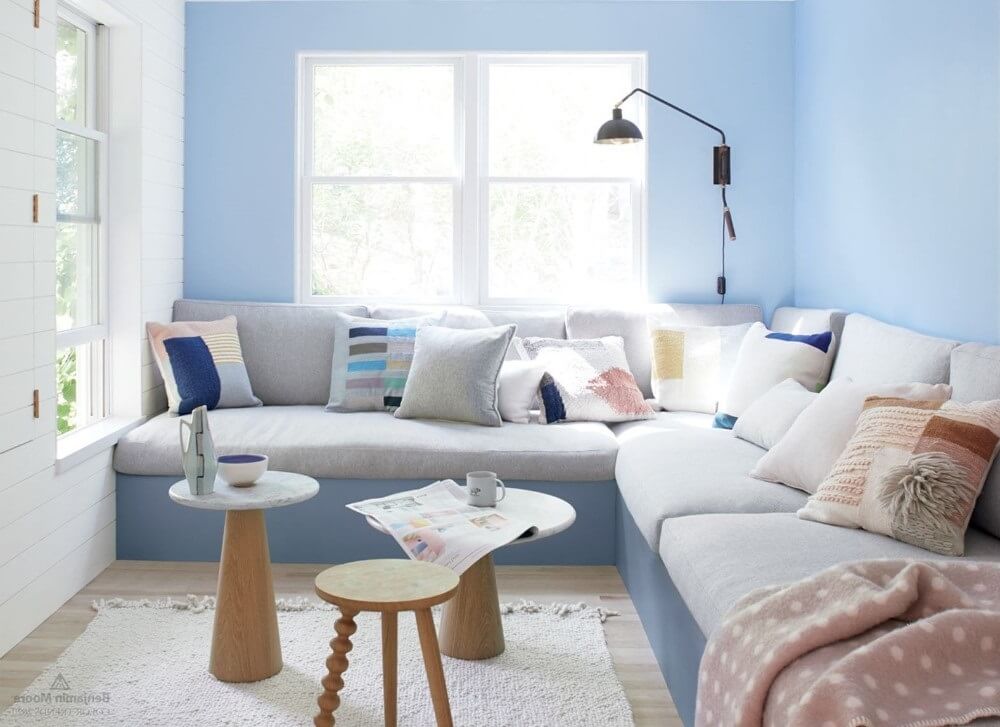
This super bright pale blue is not only stunning, but also super soft. It’s a perfect shade to highlight the bright side.
37. Pale green
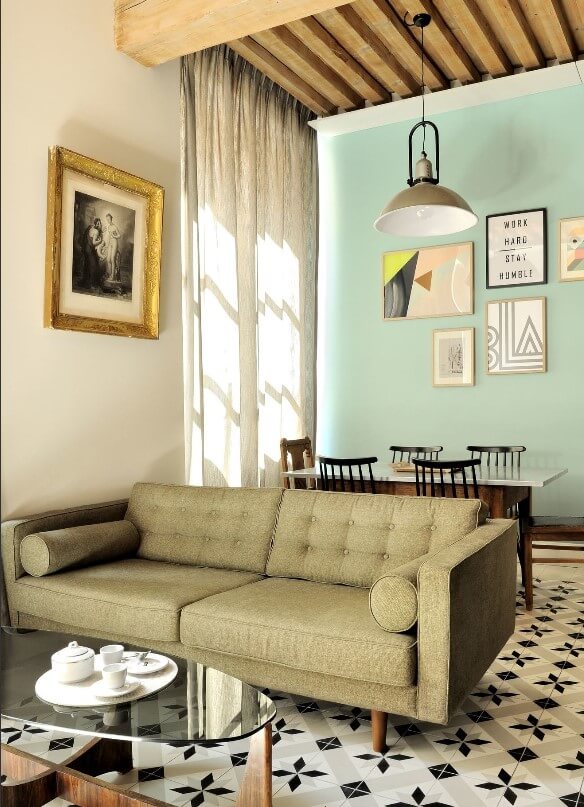
A very bright pale green will add character to the room. This will never be placed in front of the windows.
38. Gray with yellow
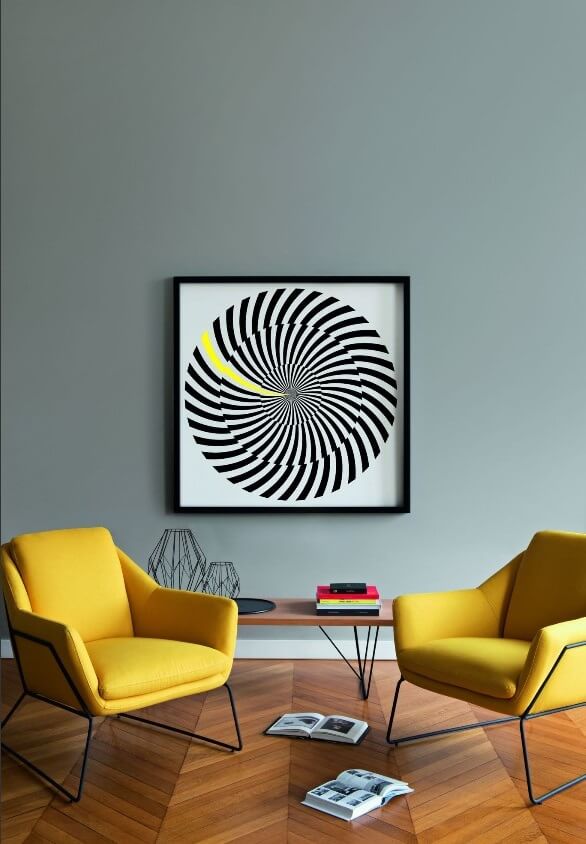
This gray catches the light perfectly, here it is perfect to bring out the yellow tint of the armchairs.
39. Pastel pink
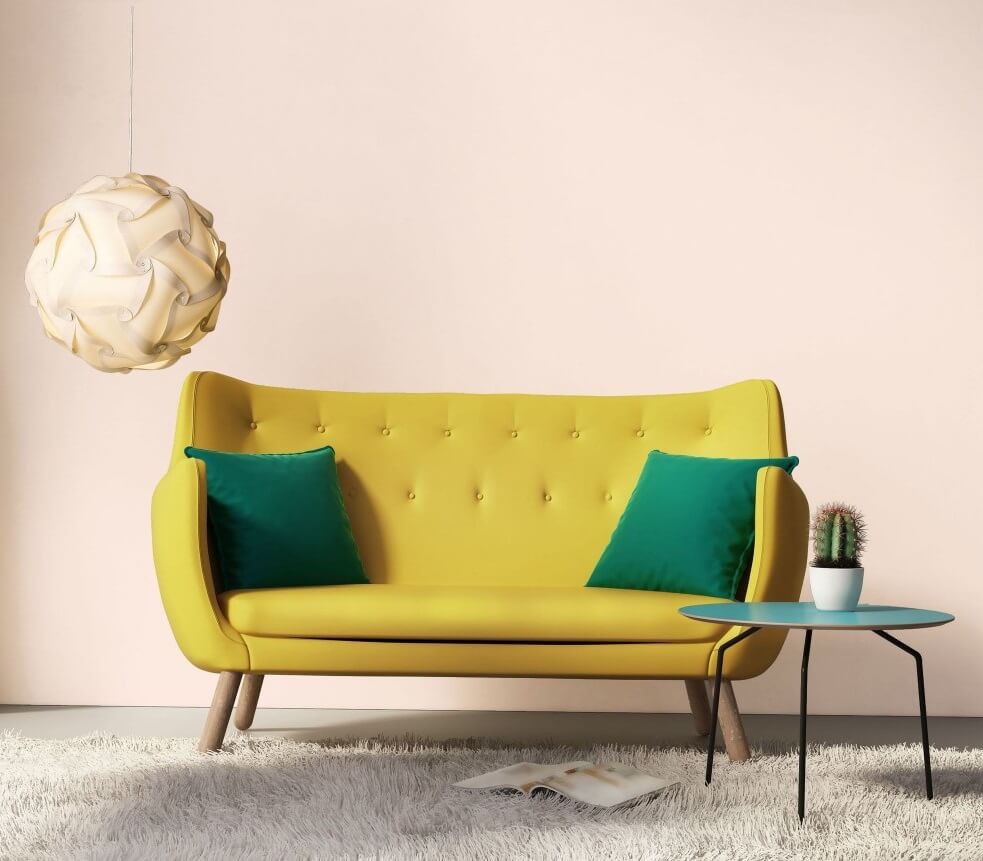
This very soft pastel pink is perfect for bringing light without leaving your walls all white.
40. Tangy blue
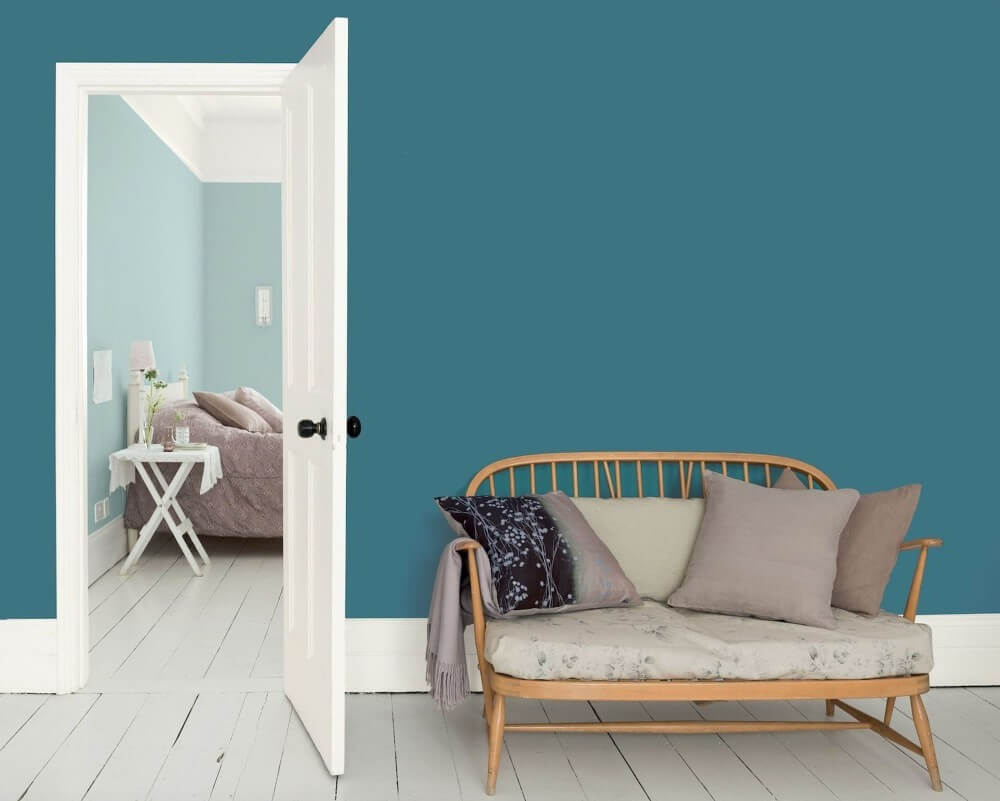
A tangy blue is ideal for giving your living room a bright and fresh atmosphere, the tangy colors wake up the room and catch the light perfectly.
